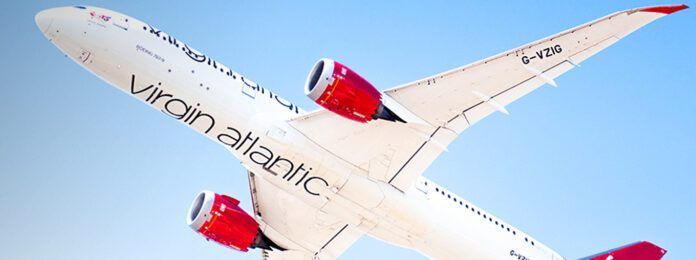Near-historically-strong winds over the mid-Atlantic Saturday night caused a Virgin Atlantic Boeing 787 Dreamliner flight from Washington, D.C., to reach London 45 minutes early. As reported by multiple news outlets, the National Weather Service (NWS) calculated the peak jet stream winds at approximately 265 mph for a maximum measured groundspeed of 802 mph. According to a National Public Radio report , the highest wind speed ever recorded by the NWS in the area was 267 mph on December 6, 2002.
The reports led to confusion among some readers as to whether a Dreamliner could, in fact, break the Mach 1 sound barrier. Of course, the 787’s airspeed (its maximum cruise is a fleet-best Mach 0.85) was no greater than normal. It was the added boost of near-record-high jet stream winds that pushed groundspeed to enable the speedy trip.
According to NPR, a United Airlines 787 departed from Newark, New Jersey, the same evening. It arrived in Lisbon, Portugal, 20 minutes ahead of schedule, having clocked a peak groundspeed or 838 mph, according to FlightAware data.
In an article published by the Washington Post, though there are no official records kept for recorded groundspeeds, the UAL flight and a China Airlines flight last month that clocked a peak 826 mph groundspeed are among the highest known peak groundspeeds for commercial airliners.



































“among the highest known peak groundspeeds for commercial airliners.”
And then there’s Concorde.
“then there’s Concorde”
Wrong, then there was Concorde 😉
Would that have been ‘oceanspeeds’?
I flew in the Air Force- C-141 and for Delta (retired on the B-777) — many times I had great groundspeeds, but I do not see anyone bragging about their return trips those days– career wise headwinds ALWAYS out number tailwinds– any crosswind is a form of a headwind, only a narrow section of crosswinds from the tail help give you a tailwind– all other crosswinds and headwinds are headwinds—
I’ve had strong headwinds in my C172 which allowed me to fly backwards. Let’s see you do that in your 777 or 787.
I’ve done that. One time the movement backwards was so obvious that my student got a really good laugh out of it.
With a strong enough wind, backwards is easy. Any wind faster than stall speed will allow you to do it. What’s really challenging is to have your groundspeed be exactly zero, and keep it there.
I have done that in my Taylorcraft BC-12d, but that was for fun– flying in the Air Force and the airlines I was paid to do the most efficient way at all times–
The bragging I was speaking of was the return trips setting the records above–
Wonder what the ground speed was for the return trips to the US from the same day/night?
Probably not much better than the average ground speed in my Champ.
I once had a peak 207kt direct tailwind on a flight from Illinois to Maine. Returned two days later with only a peak 40kt headwind.
Always makes me smile when I get extra speed for free.
The thought did cross mind though – arriving 20 minutes early, did that extra time get chewed up waiting on the ground for a gate that wasn’t vacant? Wouldn’t that be a crap end to an otherwise great flight?
Pilot operating on a commercial air route may have their average speed over that route recorded as a national record with the NAA who will in turn have it recorded as a world record with FAI, the world governing body for air sports (like FIA is for automobiles). For that to happen the speed must be at least 1% higher than the previous record, if there is one. Under US national rules an ACARS printout plus the load sheet are sufficient documentation. (https://naa.aero/wp-content/uploads/2021/11/Comm_kit_2020-01.pdf).